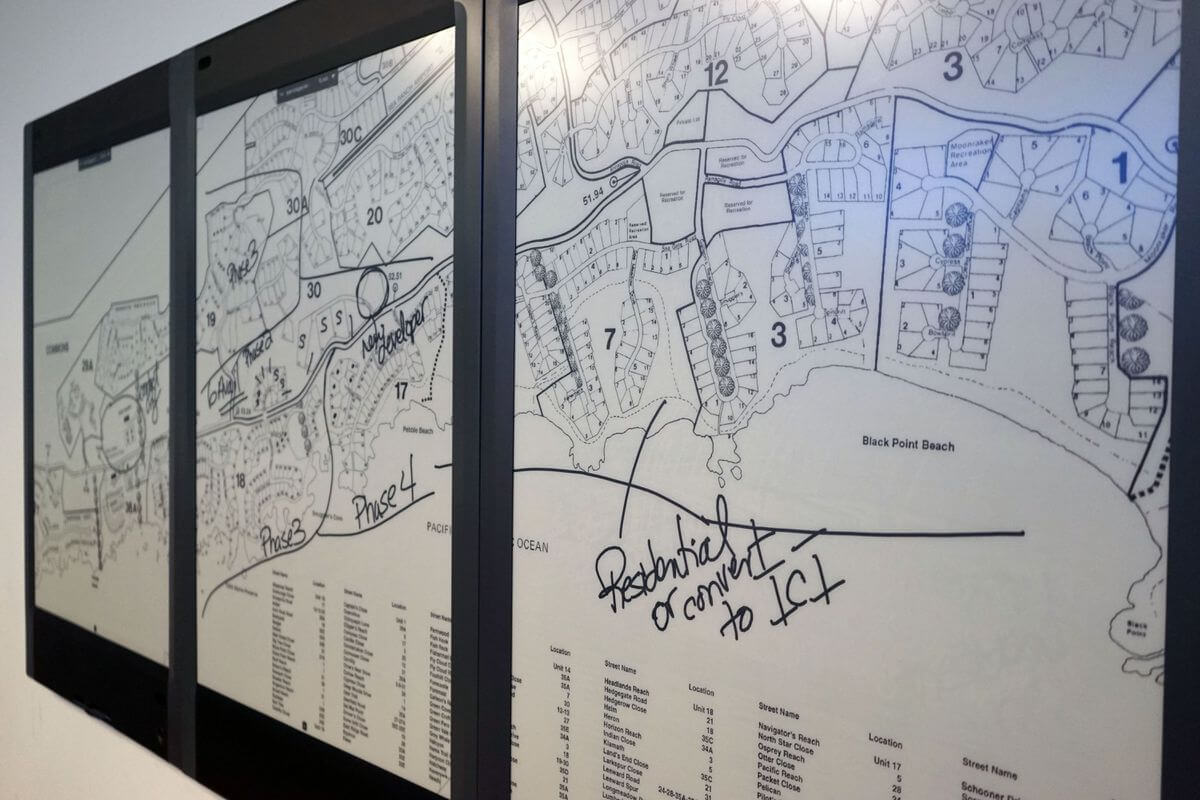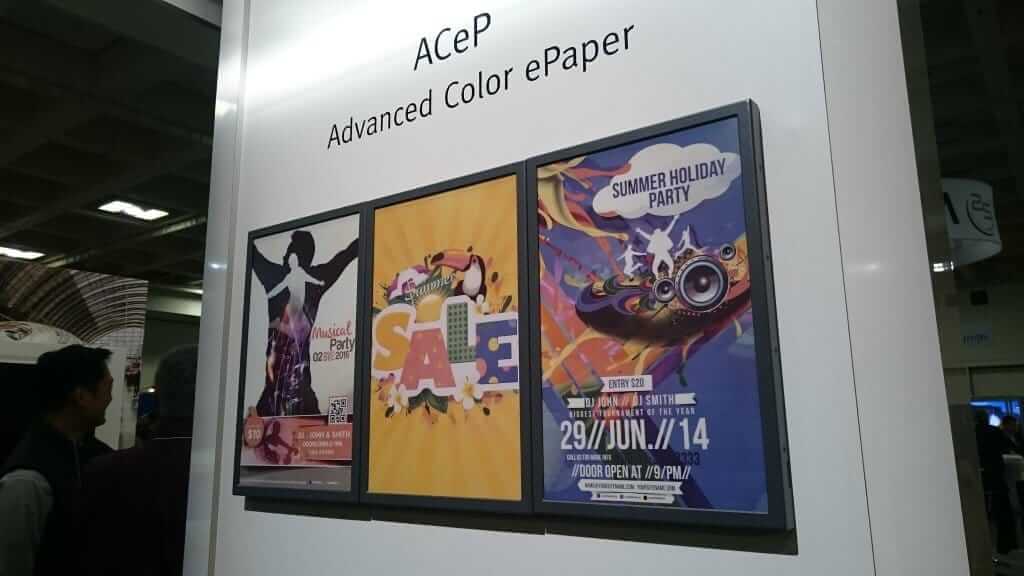Electronic Paper and E-Paper Trends and Statistics for 2019
E-Readers are on the rise and more devices were released in 2018, than any other year. Companies like Boyue, Onyx Boox and Pocketbook are beginning to be household names due to innovative hardware and great user experiences. Amazon and Kobo are the two largest companies in the world, still heavily invested in e-readers and selling ebooks. There is some interesting new e-paper technology on the cusp and this will directly influence e-reader construction in 2019. This includes products from E Ink, Clearink, Onyx, RDO and many others.
E Ink
E Ink is the largest e-paper company in the world and their technology powers every single e-reader currently available. There are a few new technologies that might be ready for prime time in 2019
Advanced Color E-paper
A few years ago E Ink developed a new form of color e-paper that was initially developed for digital signage and they worked out all of the bugs and begun shipping it to customers in late 2018. The first product was a 13.3 inch display that could render over 32,000 different colors and has a resolution of 1600 x 2500 pixels and 150 PPI. Old E ink Triton color epaper could only display 4,600 colors, so this is a huge step in the right direction.
The President of E Ink, Johnson Lee told Good e-Reader that “Since the debut of ACeP a few years ago, we have made many improvements on the platform, increasing both the color gamut and the update times. The current version of ACeP is the most sophisticated color ePaper available.”
ACeP achieves a full color gamut, including all eight primary colors, using only colored pigments. The display utilizes a single layer of electrophoretic fluid, which is controlled using voltages compatible with commercial TFT backplanes. The fluid can be incorporated into either microcapsule or Microcup structures. The richness of the colors is achieved by having all the colored pigments in every picture element (pixel) rather than the side-by-side pixel colors achieved with a CFA. This eliminates the light attenuation, which can be quite significant. Like regular E Ink ePaper, ACeP maintains the ultra-low-power and paperlike readability under all lighting conditions.
In developing ACeP, E Ink researchers solved the very complex problem of how to get reflective color at every pixel in a commercially viable structure. Other approaches have utilized stacked backplane structures that are complex, difficult to manufacture and costly. The E Ink approach utilizes only a single backplane. Many materials and waveform inventions were required to independently control the position of the multiple color pigments.
Will Advanced Color E-Paper ever be available for ereaders in 2019? Johnson did not rule it out. “The first applications we are targeting for ACeP is signage. I would not state that it will never be in ereaders; we do continuous work to improve refresh and update times, and it would have its own waveform that had similar properties to Regal. ”
Foldable E-paper Display
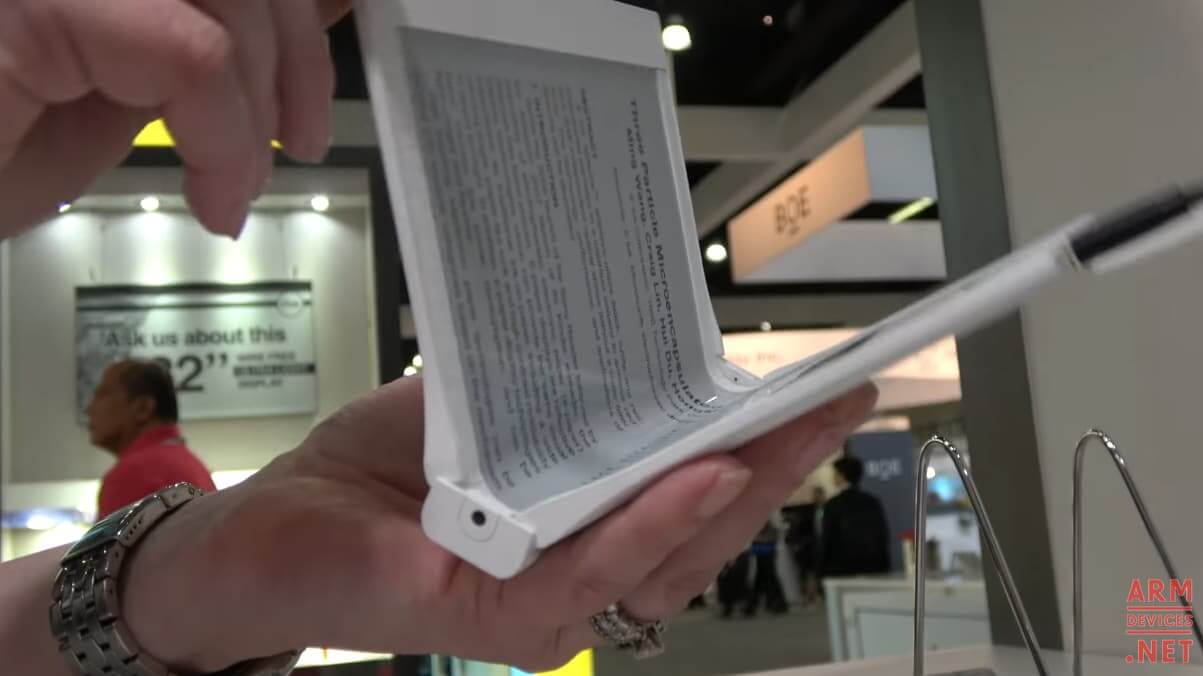
E Ink has a new foldable screen that is ready for mass production. The 10.2 inch display features a Carta Mobius plastic flexible panel with 220 PPI. The prototype features an ereader that can open and close like a real book. This is a big deal because it is not just a screen, but a fully functional e-reader with the motherboard, processor, battery and RAM underneath the hood.
Clearink

Clearink color e-paper has been in development for a number of years, but the first product using their technology will be a digital notebook aimed at students that will be released in 2019. The company has two products in their portfolio that they will be focusing on and they are scraping everything else.
CLEARink has a 1.32 inch display for wearables and 9.7 inch screens for e-readers. The company has just managed to increase the resolution of their color screens from 106 DPI to 200 PPI due to a new color filter design.
Currently CLEARink is still experimenting and trying to finalize their two products. The VP Marketing Sri Peruvemba told me “We have conducted a few different trials in the LCD mass production factory in Asia. They manufactured TFT arrays, helped us put together the display cells (front plane with our TIR film plus electrophoretic ink with black particles and backplane TFT layer), we built the modules, we have been testing them, tweaking some of the parameters and each trial is producing better output. I know this sounds a bit vague but we monitor lots of different parameters and have many permutations and combinations that are yielding acceptable results so we keep optimizing for the select few that we can deploy in Wearables and eSchoolbook applications.”
He went on to say “here is our thinking, we can pretty much design a display with any dpi that matches the underlying TFT but current market demand for eSchoolbooks is 157 PPI (to keep the cost low) and less than 200 PPI for Wearables, we will pretty much make the displays to suit the application/customer need (assuming of course large enough volume). We also see higher resolution applications including 300dpi or even higher and they will be more expensive and those applications would be willing to bear those costs but the applications we are targeting presently are looking for 200 PPI or less. This does not mean we won’t make higher PPI products to show capability to new customers but it will be a tradeoff between cost and resolution. This same principle as you know applies to any reflective display technology that uses TFT backplanes.”
Onyx Boox Color E-paper

Onyx Boox is well known for their lineup of digital note taking devices, such as the Note and MAX2. The company has developed a new way to display color on e-readers.
The Onyx Youngy Boox is a new 10.7 inch e-reader that utilizes a special Red, Green and Blue color filter applied on top of the E Ink Carta HD layer. The resolution is only 150 DPI because the requirements that greyscale and the color filter needs to display content. This device is primarily aimed at the educational sector and has a camera on the back to take pictures of homework and it also has a microphone and stereo speakers to playback lectures. It is only going to be made available in China and not internationally.
Onyx has disclosed that they are currently evaluating this technology and we might see it in a mainstream product that has international availability sometime in 2019.
RDOT
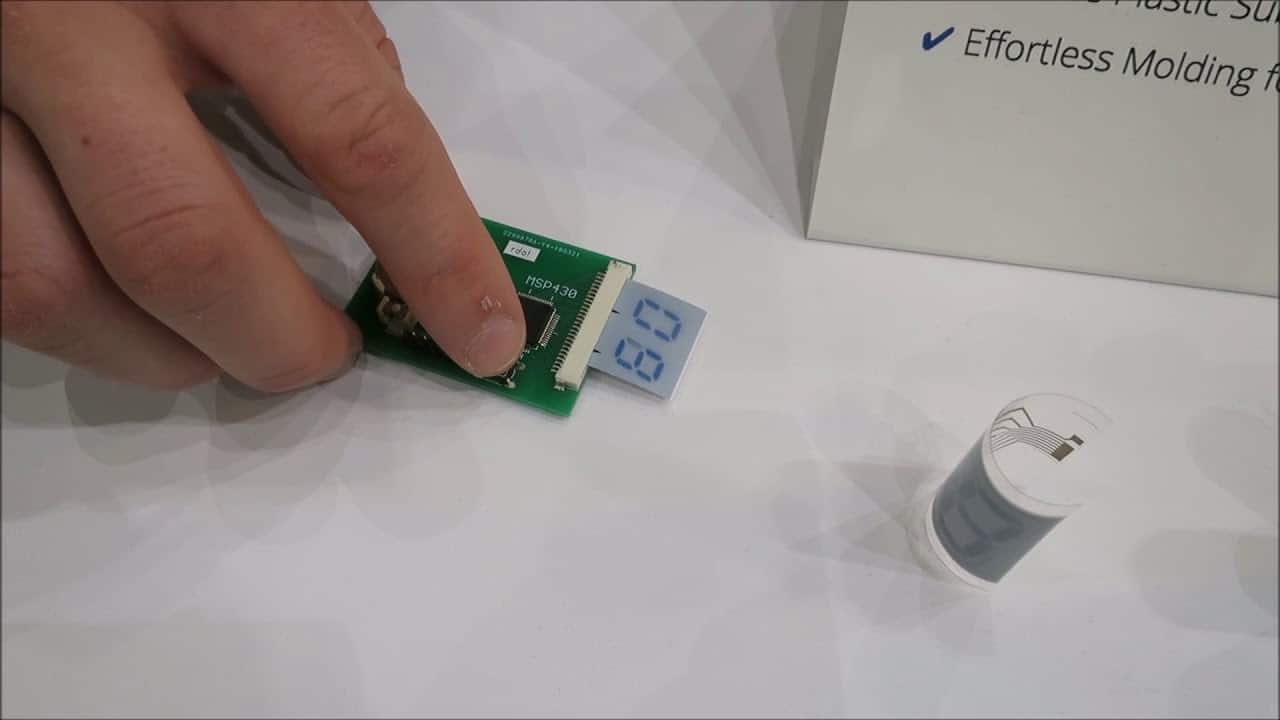
Rdot is a company based in Sweden and they have just developed an e-paper display that they think is better than E Ink. The Rdot Display is an electrochromic display. It categorized as a reflective display – meaning that it reflects ambient light instead of using a backlight. All layers are screen printed on a plastic substrate. The display stack consists of organic layers including a plastic substrate, an electrochromic material, and an electrode for each segment. Additional layers such as graphical overlays, circuits, and barrier layers may be added if required.
Rdot mentions in one of their tech articles that “LCD displays need an active driver that varies the polarity of the voltage across the pixel in a frequency of about 60Hz. E Ink, on the other hand, doesn’t need any active control once the display has been updated, this feature is often referred to as bistability. Rdot is somewhere in between LCD and E Ink, once the display has been switched the controller can go idle for about 15 minutes (there exist versions that can be idle for up to 24 hours as well). After this time a small refresh pulse is required to maintain the state. For E Ink and Rdot, energy is only required during switching and updating while no energy is consumed during idle state. Typically, the energy required for a full switch on an E Ink display is about 4mJ/cm2. The corresponding number for the Rdot display is about 1mJ/cm2 with the addition of 0,25mJ/cm2 every 15 minutes. LCD continuously consumes about 6µW/cm2.”
It remains to be seen if this tech will be ready or not for 2019, or if an existing e-reader company will take the gamble to use unproven technology. I think RDO would be best served releasing concept e-readers that are fully functional and demo it.
Plastic Logic
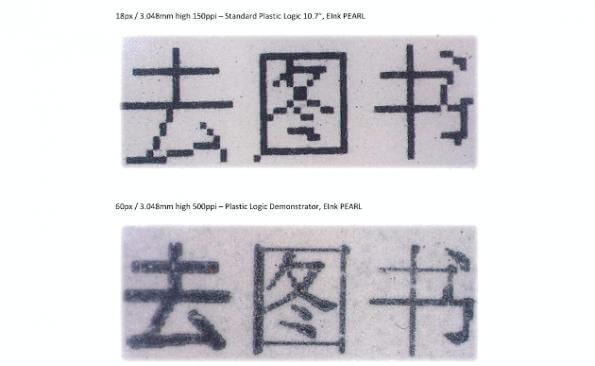
Plastic Logic is still around? They pivited their business a few years ago and decided to just use their technology with existing E Ink screens. The two companies actually signed a long-term contract to ensure that Plastic Logic would remain relevant. Plastic Logic’s current business model is designing backpanes that sit underneath the e-paper display, which drives the information displayed on the screen.
One innovation that Plastic Logic developed in early 2018 was a 55% increase in resolution and which gives a total resolution of 500 PPI. This impressive, industry-leading improvement has been achieved solely through advances in Plastic Logic’s transistor matrix backplane on a 10.8 inch E Ink screen. Prior to this technology breakthrough Plastic Logic’s most advanced commercially available display was 196 PPI on a 4.7 inch screen.
Plastic Logic’s 500ppi displays makes written text much sharper which is an advantage for Chinese and Japanese where detail has previously been lost due to resolution limitations. Another use case benefiting from the improved display density would be applications where accurate lines and measurements are critical, such as ePaper rulers, portable mapping or CAD drawings.
Tim Burne, CEO of Plastic Logic, told Good e-Reader that “Our flexible OTFT driven EPDs have so many fantastic advantages over traditional glass displays, in terms of their power consumption, daylight readability, etc. but one of the perceived limitations of the technology has always been the display density. With our new 500ppi display capability we’re not only breaking through that barrier and giving ourselves a real competitive advantage but also creating a real opportunity to widen the potential appeal of ePaper technology.”
I believe that a second generation Remarkable, Sony DPT-RP2 or Onyx Note 2 would be best served using the Plastic Logic backpanes on new products. It would really change the game for digital note taking.
Source : www.goodereader.com
